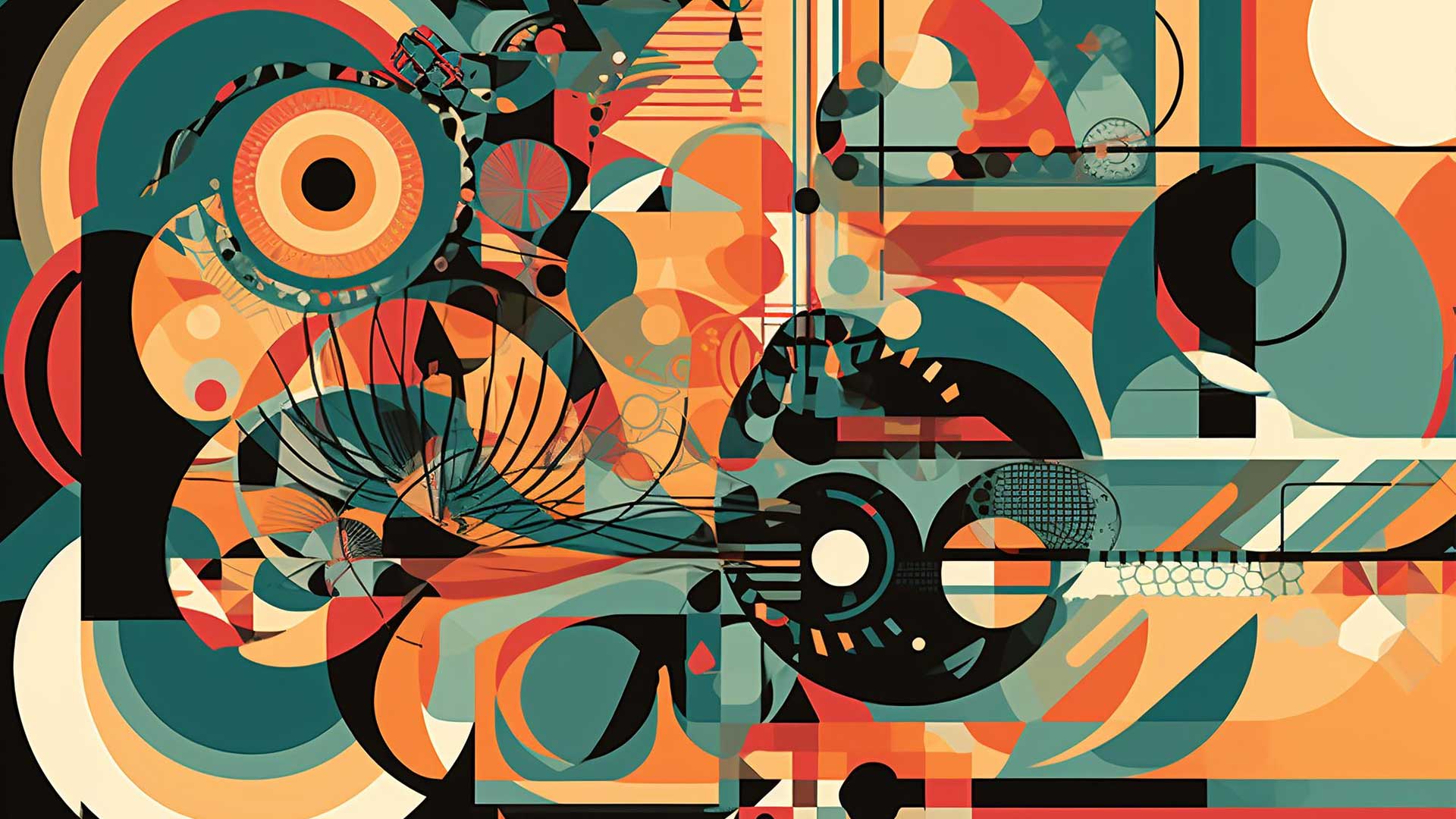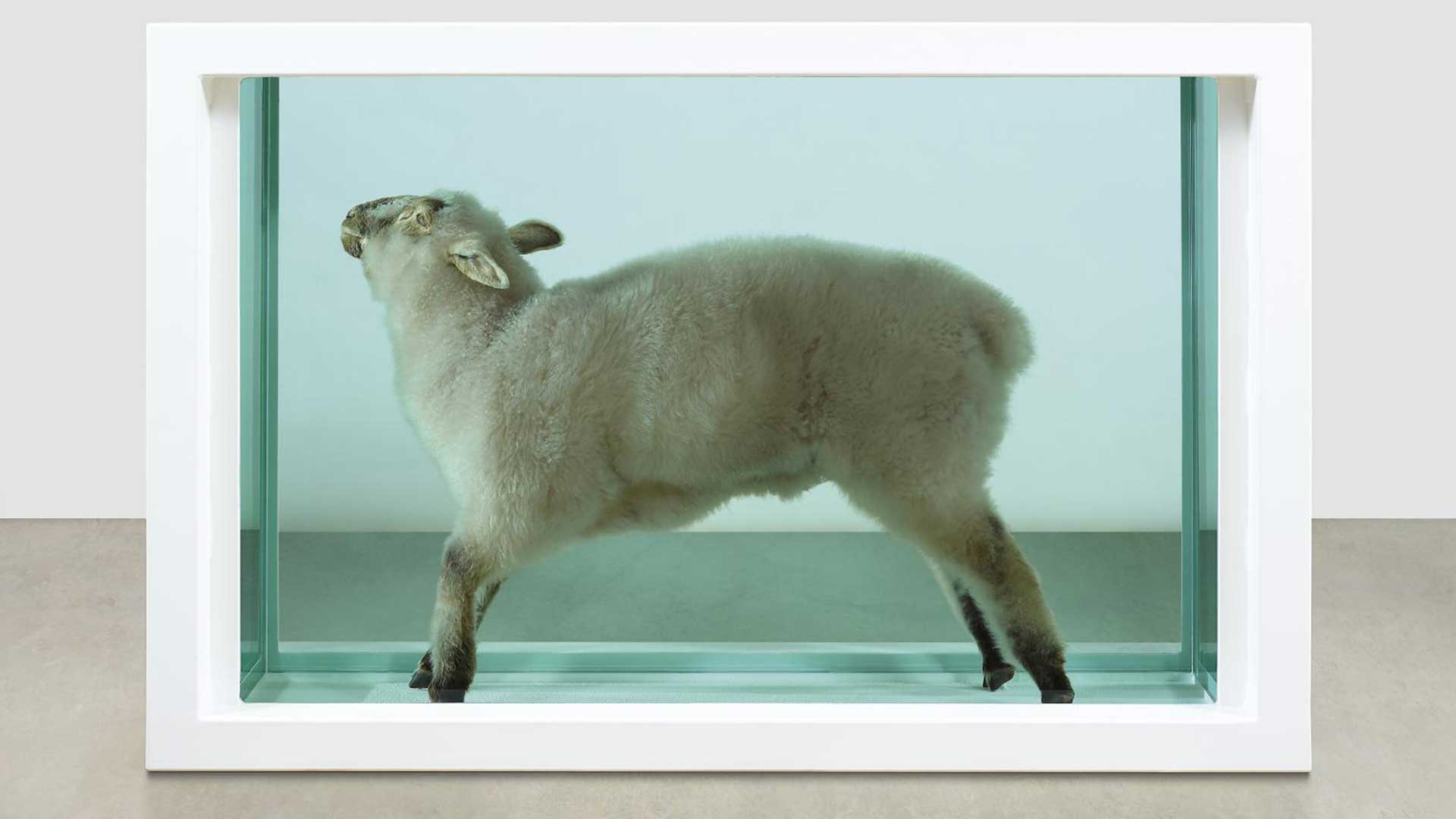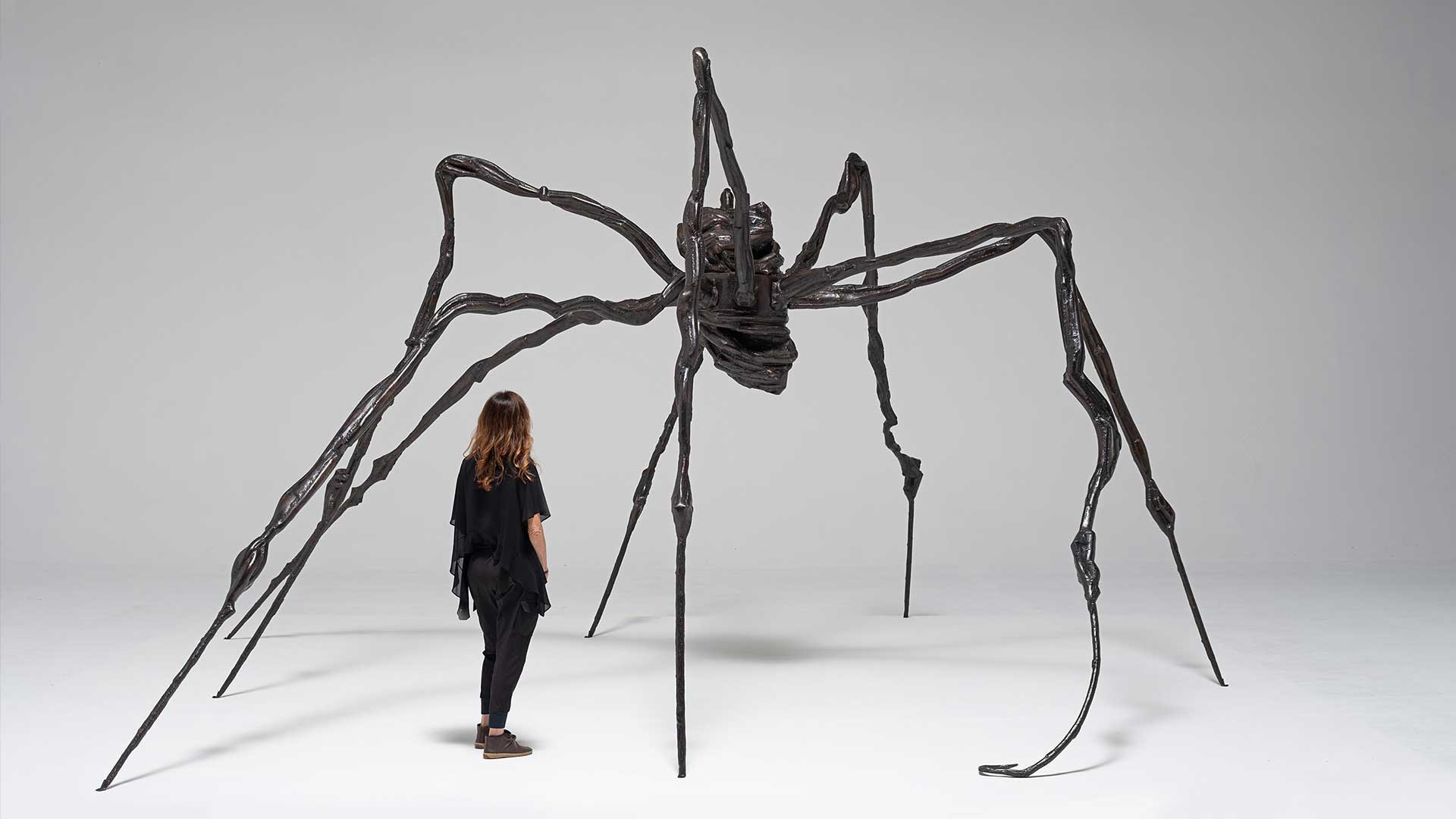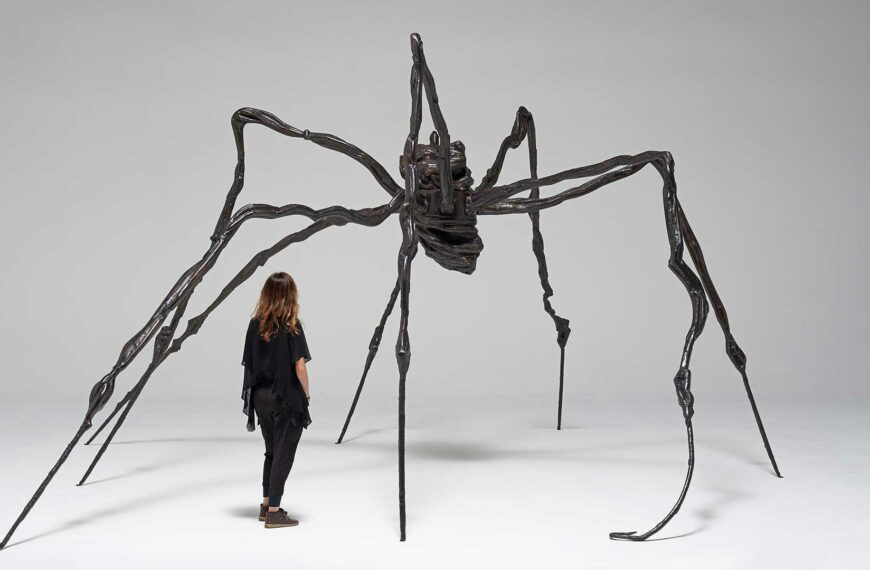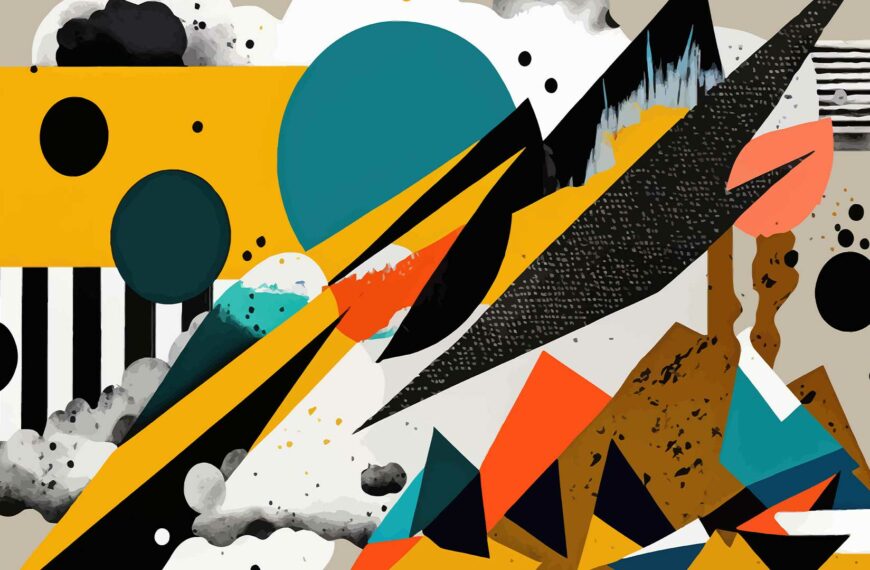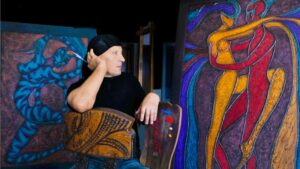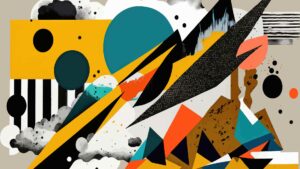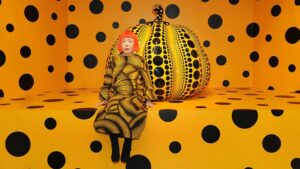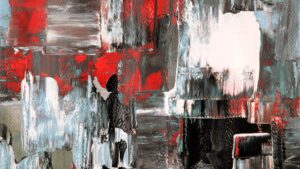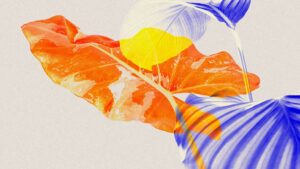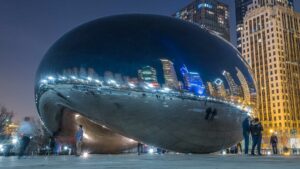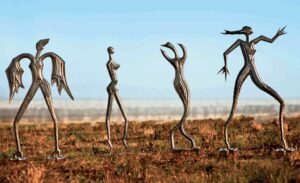Modern art movements have shaped the artistic landscape and continue to inspire and challenge us today. From Impressionism to Cubism, Expressionism to Surrealism, each movement has its unique characteristics and notable artists who have left an indelible mark on the art world. In this comprehensive guide, we will explore the evolution of modern art movements, their origins, influential artists, and the impact they have had on the art world.
What you will learn about modern art movements
- Origins, characteristics, and notable artists of major art movements such as Impressionism, Cubism, Expressionism, Surrealism, Abstract Art, Fauvism, Dadaism, Pop Art, Op Art, and Postmodern Art.
- How these movements influenced the art world and subsequent artistic developments.
- The unique objectives, techniques, and styles associated with each movement.
Impressionism
Impressionism, one of the most renowned modern art movements, emerged in the late 19th century in France. It sought to capture the fleeting impressions of light, color, and atmosphere in a spontaneous and immediate manner. The Impressionists broke away from the traditional techniques and subject matter of academic painting, focusing instead on the depiction of everyday scenes and landscapes.
Notable Impressionist artists include Claude Monet, Pierre-Auguste Renoir, and Edgar Degas. Monet’s “Impression, Sunrise” is considered the quintessential Impressionist painting, capturing the essence of the movement with its loose brushwork and emphasis on light and color. Renoir’s vibrant depictions of people and social gatherings, such as “Luncheon of the Boating Party,” showcase the movement’s emphasis on capturing the fleeting moments of modern life.
Impressionism had a profound impact on the art world, challenging the established norms and paving the way for subsequent movements. Its emphasis on capturing the subjective experience of the artist and the fleeting nature of reality laid the foundation for the exploration of new artistic possibilities.
Cubism
Cubism, possibly the most well-known art movement of the Modernist era, emerged in the early 20th century. Led by Pablo Picasso and Georges Braque, Cubism aimed to break traditional conventions and represent nature in a new way. The movement emphasized the flat dimensionality of the canvas, rejecting the illusion of depth and perspective.
Cubist art sought to depict objects from multiple viewpoints simultaneously, breaking them down into geometric shapes and fragmented forms. Picasso’s groundbreaking painting “Les Demoiselles d’Avignon” is a seminal work of Cubism, showcasing the movement’s revolutionary approach to representation. Braque’s “Violin and Candlestick” is another notable example, highlighting the fragmentation and abstracted forms characteristic of Cubist art.
The influence of Cubism extended beyond painting and sculpture, permeating architecture and design. Its emphasis on deconstruction and abstraction had a significant impact on subsequent movements, such as Constructivism and De Stijl. Cubism challenged traditional notions of representation and opened up new possibilities for artistic expression.
Expressionism
Expressionism emerged in the early 20th century as a response to the industrialization and social upheaval of the time. It sought to convey emotional and psychological experiences through art, often using bold and distorted forms to express inner turmoil and subjective realities. Expressionist artists aimed to evoke strong emotional responses from the viewer by distorting reality and amplifying the intensity of their subjects.
Notable Expressionist artists include Edvard Munch, Wassily Kandinsky, and Ernst Ludwig Kirchner. Munch’s iconic painting “The Scream” is a powerful example of Expressionism, capturing the existential angst and psychological tension of the modern world. Kandinsky, known for his abstract works, believed that art should evoke spiritual and emotional responses, and his painting “Composition VII” reflects his exploration of color and form as vehicles for expression.
Expressionism had a profound impact on the development of modern art, influencing subsequent movements such as Abstract Expressionism and Neo-Expressionism. Its emphasis on individual experience and the exploration of the subconscious mind challenged traditional artistic norms and paved the way for new forms of expression.
Surrealism
Surrealism, a movement that emerged in the 1920s, sought to unlock the power of the subconscious mind and liberate the imagination. It aimed to depict dreamlike and irrational scenes, merging reality and fantasy in unexpected and thought-provoking ways. Surrealist artists employed various techniques, such as automatic drawing and collage, to tap into the unconscious and explore the hidden depths of the human psyche.
The principles of Surrealism were laid out in the Surrealist Manifesto by André Breton in 1924. The movement attracted artists such as Salvador Dalí, René Magritte, and Max Ernst. Dalí’s iconic painting “The Persistence of Memory” with its melting clocks and dreamlike atmosphere has become synonymous with Surrealism. Magritte’s enigmatic and often witty paintings, such as “The Son of Man,” challenge our perception of reality and provoke us to question the nature of representation.
Surrealism had a profound impact on the art world, inspiring subsequent movements such as Abstract Expressionism and Pop Art. Its exploration of the irrational and the subconscious challenged traditional notions of reality and opened up new possibilities for artistic expression.
Case Study: The Impact of Impressionism on Art Education
One of the most significant impacts of Impressionism on the art world was its influence on art education. This can be seen through the case study of Sarah, a young aspiring artist who attended an art school in the late 19th century.
Sarah had always been fascinated by the play of light and color in nature, and she was drawn to the loose brushwork and vibrant palette of the Impressionist painters. However, the traditional art education she received at her school focused on strict academic principles and the meticulous representation of subjects.
Feeling constrained and uninspired by the traditional methods, Sarah began to explore Impressionism on her own. She studied the works of Monet, Renoir, and Degas, and experimented with capturing the fleeting effects of light and atmosphere in her own paintings.
Sarah’s enthusiasm for Impressionism caught the attention of her art teacher, Mr. Johnson. Seeing her dedication and the unique perspective she brought to her work, Mr. Johnson decided to introduce Impressionism into the curriculum of the art school. He incorporated outdoor painting sessions and encouraged students to focus on capturing the essence of a scene rather than reproducing it exactly.
The introduction of Impressionism into the art school’s curriculum sparked a renewed sense of excitement and creativity among the students. They were encouraged to experiment with different brushwork techniques, explore new color palettes, and embrace the spontaneity of the Impressionist style.
Sarah’s journey exemplifies the impact of Impressionism on art education. By challenging the traditional academic approach, Impressionism opened up new possibilities for artists to express themselves and pushed art education to embrace experimentation and individuality. Today, many art schools incorporate the principles of Impressionism into their curriculum, recognizing its enduring influence on modern art education.
Abstract Art
Abstract Art emerged in the early 20th century as a departure from representational forms. It aimed to move away from the depiction of recognizable objects and instead focused on the exploration of color, form, and texture. Abstract artists sought to convey emotions, ideas, and spiritual experiences through non-representational means.
Abstract Art encompasses various styles and techniques, including Abstract Expressionism, Minimalism, and Geometric Abstraction. Wassily Kandinsky, Piet Mondrian, and Jackson Pollock are among the notable abstract artists who have made significant contributions to the movement. Kandinsky’s “Composition VIII” is an iconic work that showcases his use of vibrant colors and dynamic forms to create a sense of movement and emotion. Mondrian’s iconic grid-based paintings, such as “Composition with Red, Blue, and Yellow,” reflect his exploration of harmony and balance through geometric abstraction. Pollock’s innovative drip painting technique, as seen in “No. 5, 1948,” revolutionized the way paint was applied to the canvas and emphasized the physicality of the artistic process.
Abstract Art continues to be a powerful and influential force in the art world, challenging traditional notions of representation and inviting viewers to engage with art on a more visceral and emotional level.
Fauvism
Fauvism, an early 20th-century art movement, emerged in France and is characterized by its bold use of vibrant colors and expressive brushwork. Fauvist artists sought to capture the emotional and sensory experiences of the world through intense color and simplified forms. The movement’s name, derived from the French word “fauve” meaning “wild beast,” reflects the untamed and instinctual nature of Fauvist art.
Henri Matisse and André Derain were key figures in the Fauvist movement. Matisse’s “Woman with a Hat” exemplifies the movement’s vibrant palette and expressive brushwork. Derain’s “Charing Cross Bridge” showcases his bold and energetic use of color to convey the atmosphere and mood of the scene.
Fauvism challenged traditional ideas of representation and paved the way for subsequent movements such as Expressionism and Abstract Expressionism. Its emphasis on color and emotional expression had a lasting impact on the development of modern art.
Dadaism
Dadaism emerged in the early 20th century as a response to the absurdity and disillusionment of World War I. It was a movement characterized by its anti-establishment nature and rejection of traditional artistic conventions. Dada artists employed unconventional materials and techniques, often incorporating found objects and collage into their works.
Notable Dada artists include Marcel Duchamp, Man Ray, and Hannah Höch. Duchamp’s “Fountain,” a urinal displayed as an artwork, is one of the movement’s most iconic pieces, challenging the very definition of art. Man Ray’s experimental photography and photograms pushed the boundaries of traditional artistic techniques. Hannah Höch’s photomontages, such as “Cut with the Kitchen Knife Dada through the Last Weimar Beer-Belly Cultural Epoch of Germany,” explored themes of gender and societal norms.
Dadaism’s radical and irreverent approach to art laid the groundwork for subsequent movements such as Surrealism and Conceptual Art. It embraced the absurd and the chaotic, questioning the role of art in society and challenging the status quo.
| Modern Art Movement | Key Characteristics | Notable Artists | Influences | Impact on Art World |
|---|---|---|---|---|
| Dadaism | Anti-establishment, rejection of traditional conventions, incorporation of found objects and collage | Marcel Duchamp, Man Ray, Hannah Höch | Surrealism, Conceptual Art | Questioned the role of art in society, influenced subsequent movements |
| Pop Art | Incorporation of popular culture imagery, critique of consumerism and commodification of art | Andy Warhol, Roy Lichtenstein, Claes Oldenburg | Dadaism, consumer culture | Blurred boundaries between high and low culture, influenced contemporary art and culture |
Pop Art
Pop Art emerged in the mid-20th century as a reaction against the abstract and elitist tendencies of the art world. It incorporated popular culture imagery, mass media, and everyday objects into art, blurring the boundaries between high and low culture. Pop Art sought to celebrate and critique consumerism and the commodification of art.
Major Pop Art artists include Andy Warhol, Roy Lichtenstein, and Claes Oldenburg. Warhol’s screen prints of Marilyn Monroe and Campbell’s Soup cans have become iconic symbols of the movement. Lichtenstein’s comic book-inspired paintings, such as “Whaam!” and “Drowning Girl,” critique the mass-produced nature of popular culture. Oldenburg’s oversized sculptures of everyday objects, such as “Floor Burger” and “Giant Three-Way Plug,” challenge our perceptions of scale and materiality.
Pop Art’s influence can be seen in contemporary art and culture, from street art to advertising. Its embrace of popular culture imagery and critique of consumerism continue to resonate with artists and viewers alike.
Op Art
Op Art, short for Optical Art, emerged in the 1960s and aimed to explore visual perception and illusions. It employed geometric forms, precise patterns, and contrasting colors to create optical effects that seemed to pulsate or vibrate. Op Art sought to engage the viewer’s senses and create an immersive visual experience.
Notable Op Art artists include Victor Vasarely, Bridget Riley, and Jesús Rafael Soto. Vasarely’s colorful and intricate works, such as “Zebra” and “Vega Per,” create mesmerizing optical illusions. Riley’s black and white paintings, such as “Movement in Squares” and “Fall,” employ precise patterns and contrasting tones to create a sense of movement and depth. Soto’s “Penetrable” installations invite viewers to walk through hanging strands, creating a dynamic and immersive experience.
Op Art’s exploration of visual perception and illusions challenged traditional notions of artistic representation and engaged viewers on a sensory level. Its influence can be seen in contemporary art, design, and even fashion.
Postmodern Art
Postmodern Art emerged in the mid-20th century as a reaction against the modernist principles of progress, grand narratives, and universal truths. It embraced diversity, pluralism, and the rejection of fixed meanings. Postmodern artists employed various styles, mediums, and techniques, often incorporating elements of past artistic movements and popular culture.
Postmodern Art encompasses a wide range of styles and approaches, from appropriation and pastiche to performance and installation art. Artists

